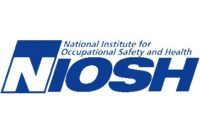Do you know your people? 5 ways to assess their well-being

Eat, sleep, work, play and love are the five typical activities of daily living, according to Dr. Raymond Catton. Each has a connection to workplace safety. Let’s examine.
- “Eat” is not merely breakfast, lunch, dinner and snacks. More broadly, it can be looked at as nourishment. Catton uses the examples of a sunbather dedicated to the sun and its rejuvenating and nourishing effects; and a motorcyclist getting personal sustenance from breezing along in the great outdoors. Individuals who are malnourished – missing out on rejuvenating, energizing activities – might come to work feeling low, thinking sluggishly, and acting at something less than peak performance.
- “Sleep” is an easy one. Much has been researched, written and said about the dangers of sleep deprivation. And it turns out getting a good night’s sleep doesn’t come naturally to us all. According to the Sleep Foundation, in 2011 43 percent of Americans between the ages of 13 and 64 said they rarely or never get a good night’s rest on weeknights. More than half (60 percent) said they experience a sleep problem every night or almost every night (snoring, waking in the night, waking too early, or not feeling refreshed when they get up in the morning). No wonder fatigue management is a hot topic right now among safety professionals.
- “Work” of course is a major component of daily life. It’s the activity that takes up most of our waking time. Work contributes (or doesn’t) to our general sense of well-being and personal identity. Catton gives the example of people meeting each other for the first time. First we give our name as a personal identifier, often followed by some mention of the work we do, our occupation. Given its high social status (especially in a competitive culture such as thrives in the U.S.), how we relate to our work affects our sense of well-being and morale.
Turned off, tuned out
Safety pros talk all the time about the importance of employee engagement, but how do you get engaged workers when 85 percent of workers worldwide admit to hating their jobs, when surveyed anonymously in a 2017 Gallup poll. OK, maybe “hate” is too strong a word. But it’s fair to say they are dissatisfied. In the U.S. “only” 70 percent hate their work. Most – 62 percent – are described as not engaged, meaning they go through their days on autopilot, a kind of sleepwalking. Obviously sleepwalking through a construction site or factory carries all sorts of risks.
- “Play” is more than fun and games. Sports, exercise, entertainment, travel, hobbies and indulging in creature comforts give us relief from stresses. Overindulgence can be problematic, as in excessive substance abuse, obsessive, draining over-exercise or too much of any distraction or form of release. And the absence of sufficient “play time” can lower morale, our sense of well-being, and can contribute to feeling depressed or anxious. It’s the work-life balance we’re all after.
- “Love” is an essential. It is bonding and pairing and support, yielding pleasure and comfort; a sense of belongingness and, in the words of Dr. E. Scott Geller, “actively caring” for others. Safety pros have made attempts forever to turn on employees to being their working “brothers’ and sisters’ keepers.” To go beyond the normal call of duty and watch out for not only their own safety but the safety of co-workers. Love in this case is not romantic but supportive and protective. The benefits to a safe workplace are obvious.
Cultures of connectivity
Studies have shown that the safest workplaces have cultures in which the workforce is inter-connected, knowing each other long and well. There’s stability and not much turnover. Conversations come easily. Openness and trust are established. Supervisors are on a first-name basis with employees, and stop to talk with them about their families, hobbies, or their weekends or vacations.
This is most easily accomplished on a small scale. A business with 20 employees can be like a family. A multinational such as Ford Motor Company with 201,000 employees needs to be broken down first by plant locations, then departments within those plants, then shifts of teams or work cells. Get down to the “granular level” of connectivity and interdependence, as consultants like to say.
It is at this micro level that many safety pros have an opportunity to assess the well-being of their employees in terms of the five most typical daily activities of life. You can do this without diving in too deep, getting too personal. You do this by educating employees about eat, sleep, work, play and love – the five essentials – and perhaps ask them to take an inventory of their own lives in these terms. What they may learn about themselves is theirs to keep. We’re not talking about safety pros running group therapy sessions or becoming nosy or intrusive.
Awareness of health influences
But once you put the importance of eat, sleep, work, play and love on the table, out in the open, in a small setting with a small number of workers, it’s easier to get a handle on the workforce’s well-being, the shape they’re in. If something is out of whack – being overweight, over-indulgent in some respect, tired, depressed or feeling alienated and disengaged – it’s not the safety pro’s responsibility to jump in and play doctor or therapist. Not at all. But you can point people in the right direction to get the right kind of help. You workplace will be safer for it.
One caveat: well-being is an extension of workplace safety that some organizational cultures focus on and encourage more than others do. In many cultures it is too touchy-feely. What’s this have to do with OSHA? Absolutely nothing. To discuss aspects of well-being, your culture needs to go beyond basic safety and compliance and embrace wellness and healthy lifestyles.
Looking for a reprint of this article?
From high-res PDFs to custom plaques, order your copy today!






